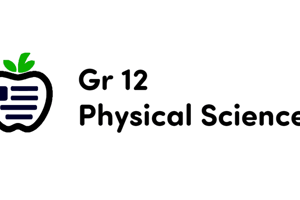Podcast
Questions and Answers
What phenomenon describes the change in frequency of a sound wave due to the relative motion between the source and the observer?
What phenomenon describes the change in frequency of a sound wave due to the relative motion between the source and the observer?
- Timber Effect
- Doppler Effect (correct)
- Weather Effect
- Transmission Effect
What term describes the accumulation of electric charge on the surface of a material?
What term describes the accumulation of electric charge on the surface of a material?
- Static Electricity (correct)
- Current Electricity
- Moving Electricity
- Magnetic Electricity
The distance between two successive crests in an electromagnetic wave is known as what?
The distance between two successive crests in an electromagnetic wave is known as what?
- Period
- Frequency
- Wavelength (correct)
- Velocity
Which fundamental law of electrical circuits is mathematically expressed as $V = IR$?
Which fundamental law of electrical circuits is mathematically expressed as $V = IR$?
Who is credited with the development of the electromagnetic theory of light?
Who is credited with the development of the electromagnetic theory of light?
Which of the following elements is a metallic substance that exists in a liquid state at room temperature?
Which of the following elements is a metallic substance that exists in a liquid state at room temperature?
What term accurately describes a solution containing one mole of solute per liter (one decimeter cube) of solution?
What term accurately describes a solution containing one mole of solute per liter (one decimeter cube) of solution?
What chemical property is exhibited by ammonium chloride ($NH_4Cl$) when dissolved in water?
What chemical property is exhibited by ammonium chloride ($NH_4Cl$) when dissolved in water?
What approximate pH range characterizes the environment within the human stomach?
What approximate pH range characterizes the environment within the human stomach?
Which of the following organic acids is distinctly not classified as an amino acid?
Which of the following organic acids is distinctly not classified as an amino acid?
Flashcards
Doppler Effect
Doppler Effect
Change in wave frequency during relative motion between source and observer.
Static Electricity
Static Electricity
Buildup of electric charge on a surface.
Wavelength
Wavelength
Distance between successive crests in a wave.
Ohm's Law
Ohm's Law
Signup and view all the flashcards
Electromagnetic theory
Electromagnetic theory
Signup and view all the flashcards
Mercury
Mercury
Signup and view all the flashcards
Molar Solution
Molar Solution
Signup and view all the flashcards
Acidic Salt
Acidic Salt
Signup and view all the flashcards
pH of stomach acid
pH of stomach acid
Signup and view all the flashcards
Not an amino acid
Not an amino acid
Signup and view all the flashcards
Study Notes
- Exam is titled: 12 - Applied Sciences-I
- Total marks: 50
- Time allowed: 150 minutes
Objective - Section A (10 Minutes)
- An apparent change in frequency due to relative motion between the source of sound emission is known as the Doppler Effect.
- Electricity build on the surface of a substance is called Static Electricity.
- The distance between successive crests in an electromagnetic wave is Wavelength.
- The equation V=IR represents Ohm's Law.
- Electromagnetic theory was proposed by James Clark Maxwell.
- Mercury is the only metallic element that is liquid at room temperature.
- A solution containing one mole of solute in one decimeter cube is known as a Molar Solution.
- Ammonium chloride is an Acidic Salt.
- The approximate pH of stomach acid is 1.5 to 3.5.
- Palmitic Acid is not an amino acid.
Short Questions - Section B
- Each question is worth 2 marks, attempt any 13 questions.
- Q1. Asks for the units of mass and volume.
- Q2. Asks about pressure in hydrostatic fluids.
- Q3. Requires differentiation between transmission and reflection of light.
- Q4. Requires a list of differences between insulators and conductors.
- Q5. Asks for a definition of electromagnetic (electric and magnetic) induction.
- Q6. Asks for the unit of current and a definition of wavelength.
- Q7. Asks for a definition of ionization.
- Q8. Asks under what circumstances the excitation of electrons occurs.
- Q9. Asks for the chemical formulas of: i) Sulphuric acid, and ii) Sodium hydroxide.
- Q10. Asks for any 2 applications of chemical reactions.
- Q11. Requires you to name the four stages of the water cycle.
- Q12. Asks for the differences between hard water and soft water.
- Q13. Asks about the various types of concentration units of solutions.
- Q14. Asks for the definition of hydrolysis and whether vinegar is alkaline or acidic.
- Q15. Asks for a definition of buffer and what a buffer is generally composed of.
- Q16. Asks to enumerate uses of table salt.
- Q17. Requires an explanation of electrolysis.
Long Questions - Section C
- Each question is worth 7 marks. Attempt any 2 questions.
- Q1.a. Asks for the definition of the scientific method and its steps in detail (4 marks).
- Q1.b. Asks for the definition of Archimedes' principle and mention two of its applications (3 marks).
- Q2.a. Asks for the characteristics of sound, and to describe them in detail (4 marks).
- Q2.b. Asks for an explanation of Charles's law in detail (3 marks).
- Q3. Asks to discuss the sources and importance of carbohydrates and lipids in detail (7 marks).
Studying That Suits You
Use AI to generate personalized quizzes and flashcards to suit your learning preferences.




